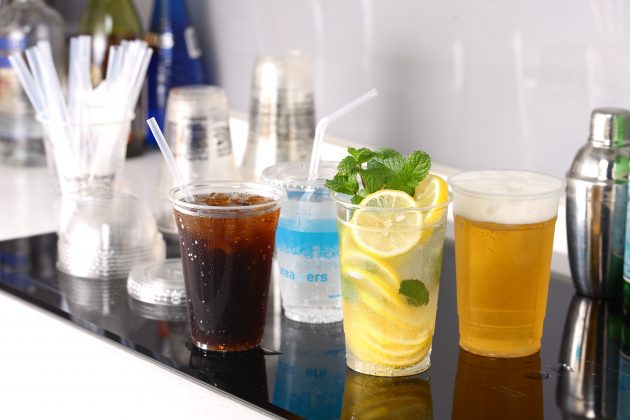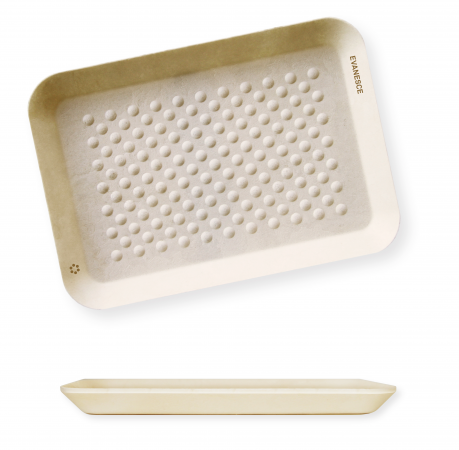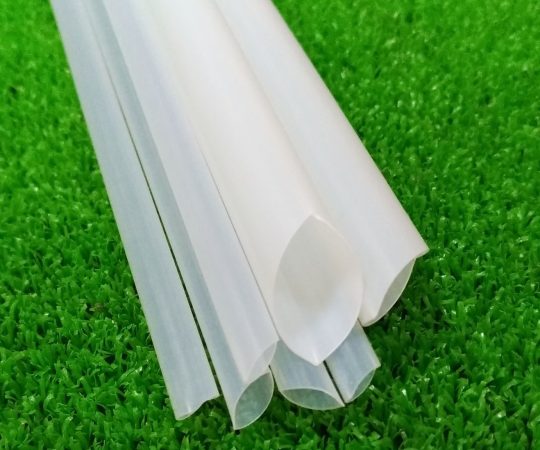
Green alternatives to single-use plastic
By Douglas Horne
Packaging Sustainability circular economy Editor pick Evanesce food packaging Bioplastics is a plant-based packaging alternative to single-use plastic. Photos courtesy Evanesce
Bioplastics is a plant-based packaging alternative to single-use plastic. Photos courtesy Evanesce Consumers are demanding more sustainable solutions, and some are even willing to pay a premium for products delivering on sustainability claims.
In 2021, the E.U., several U.S. states, and other countries including Canada pledged to ban single-use plastics and poly-fluoroalkyl substances (PFAS) or ‘forever chemicals’ that are added to food packaging, and for good reason. An alarming 380 million tons of plastic are produced every year and the COVID-19 pandemic only made things worse. It’s estimated that the use of single-use plastics soared by 250 to 300 per cent worldwide during COVID-19.
The food packaging industry is at a crossroads. Nearly 40 per cent of plastic used across the world comes from packaging, and often this waste is not recyclable. In fact, it’s estimated that less than 10 per cent of plastic has been recycled since 1950. In the near future, eco-friendly packaging will be a necessity.
Green packaging alternatives
Molded fibre or pulp is a green alternative that is made from 100 per cent recycled paper or natural fibres. This alternative is a cost effective and eco-friendly packaging solution. It can be compostable unless it gets lined with plastic.
Plant-based packaging is gaining popularity as an eco-friendly alternative in the food services industry. For example, mushroom packaging uses clean, ground agricultural waste fused together by a matrix of mushroom roots. Seaweed packaging is made from gelatinous ‘agar’ found in seaweed and algae.
One growing plant-based alternative is bioplastics or corn plastics. The organic composition of recycled starch procured from waste and PLA (polylactic acid) provide the flexibility and durability required for food packaging. As the name suggests, these products share the look, feel and functionality of plastic. In fact, they can easily be mistaken for plastic. Their most compelling feature is that it decomposes completely in 90 days or less.
Companies like Ford, Heinz, Nestle, Nike, Procter & Gamble, Unilever, Coca-Cola Company and Danone have joined the World Wildlife Fund to launch the Bioplastic Feedstock Alliance (BFA), to bring together experts across various industries and organizations to help guide the evaluation and sustainable development of bioplastic feedstocks. Further, global chains like Starbucks and Burger King have already added some PLA products to their overall waste reduction strategy.

Bioplastics provide the flexibility and durability required for food packaging.
Biodegradable or compostable packaging
Though compostable and biodegradable are often used interchangeably, they do not mean the same thing. Biodegradable can be misleading, as any product will eventually break down and decompose, even Styrofoam. It just takes 500 years to break down.
One of the biggest problems with biodegradable plastic is that it does not fully decompose in landfills due to low oxygen levels. This type of plastic can’t be recycled.
Compostable packaging, on the other hand, is certified by regulatory bodies such as the Biodegradable Products Institute (BPI). A product may be certified compostable in industrial facility, meaning it requires increased temperatures and specifically formulated microbial conditions to be converted into useful compost. Alternatively, the product could be certified home compostable, in which it will naturally decompose on its own—in your home or backyard.
Just because packaging is compostable doesn’t necessarily mean it functions like its non-sustainable alternative plastic or Styrofoam. For example, paper straws were hailed to be the solution to our plastic straw problem, but have poor functionality. Many consumers complain about their taste or texture, or they become soggy within a few minutes of using.

Food packaging solutions must meet consumer expectations to be truly sustainable.
The shift to circular packaging
The global supply chain is shifting from a linear to a circular economy, where waste and pollution are not just byproducts, but also incorporated into the design of new products.
It’s estimated a circular approach can reduce the amount of plastics entering our oceans by 80 per cent each year, generate savings of USD $200 billion per year, reduce greenhouse gas emissions by 25 per cent, and create 700,000 net additional jobs by 2040.
To eliminate the use of single-use plastics, we need more than just green solutions. We need truly sustainable, cost-competitive and commercially scalable solutions that fulfil consumer expectations.
Douglas Horne is the founder and CEO of Evanesce. Evanesce offers a line of PLA products that look and perform like plastic, but are 100 per cent plant-based and certified-compostable.
Print this page